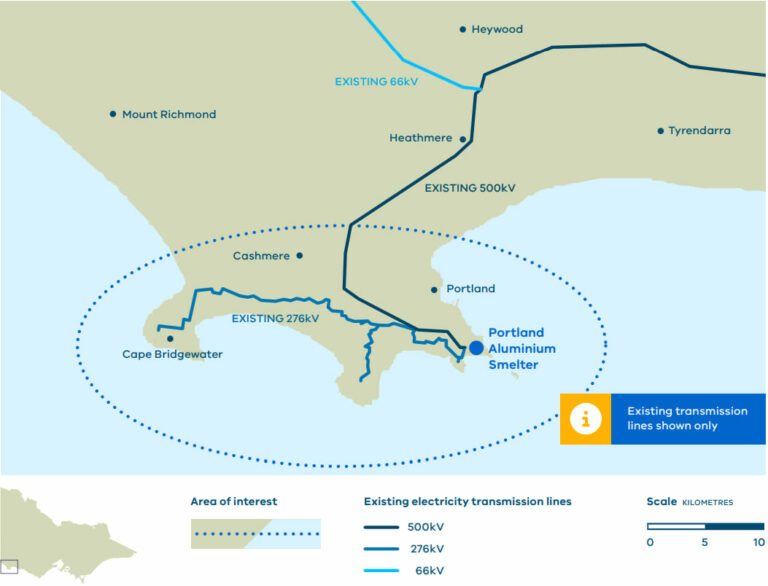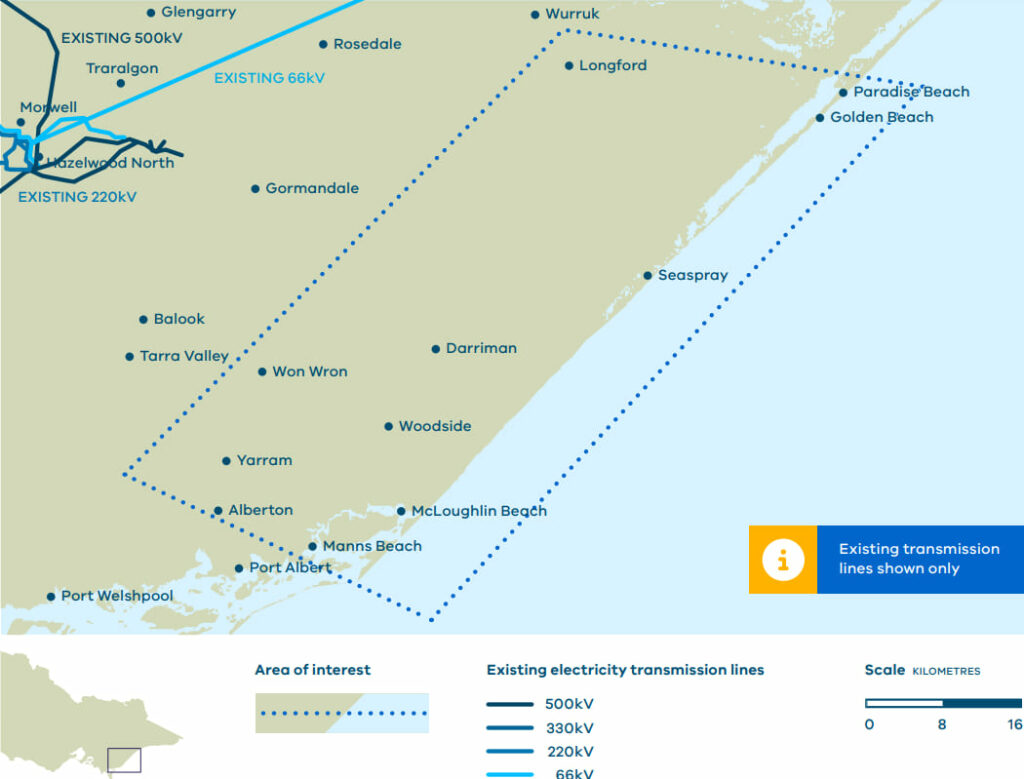
Through the process, VicGrid will determine potential new transmission connection points and transmission corridors to enable a coordinated connection of offshore wind farms in Gippsland and Portland.

As reported in March, Victorian Energy and Resources Ministery released the Victorian Offshore Wind Energy Implementation Statement 2 which sets out how the state will leverage industry-led investment in offshore wind for the first tranche of projects that will deliver at least 2 GW by 2032, as per the Victorian government’s targets.
The strategy, among other things, outlines that VicGrid will lead the development of transmission infrastructure for offshore wind, with specific transmission connection point locations and route corridors in Gippsland and Portland to be announced by the end of 2023.
“For offshore wind to succeed we need to expand our electricity transmission system to connect this new clean energy source to Victorian homes and businesses across the state. Our role on offshore wind is to ensure new transmission is available in time to make use of this new clean energy source and meet Victoria’s offshore wind targets”, VicGrid states in an invitation for public comment.
According to Victoria’s REZ manager, the transmission solution will involve avoiding multiple transmission lines overlapping the landscape from offshore wind projects, reducing duplication and cumulative impacts to regional communities hosting the new transmission, and avoiding unnecessary energy costs for Victorian households and businesses.
The Gippsland area is Australia’s first offshore wind area, following the country’s Minister for Climate Change and Energy declaring the Bass Strait as suitable for offshore renewable energy infrastructure.
The area already has several projects proposed to be built there, including the 2 GW Star of the South, Australia’s first and most progressed offshore wind project and the first offshore wind project to receive Major Project Status from the Australian government.
In January of this year, the country’s Ministry for Climate Change and Energy opened the invitation period for feasibility licence applications for the Gippsland area, which closes on 27 April.
As for Victoria, the state’s government has set targets of at least 2 GW of offshore generation capacity by 2032, 4 GW by 2035 and 9 GW by 2040.